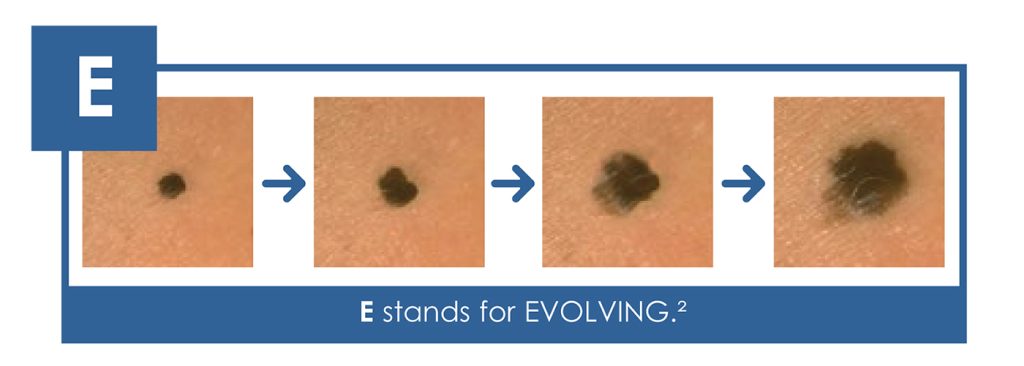Melanoma detection and treatment is one of the most crucial tasks that a board-certified dermatologist does on a day-to-day basis. Although melanoma can be the most severe type of skin cancer, it does have a high cure rate if detected early. At my Houston dermatology practice, I specialize in assessing skin concerns and identifying and treating skin cancer.
Anyone can get melanoma. In fact, more than one million Americans are living with melanoma today.1
If you have any concerns that you may have skin cancer or an irregular mole, please call (713) 487-8233 or request a consultation online to schedule an examination.
What Is Melanoma?
Melanoma derives from cells in the skin called melanocytes mainly due to environmental factors such as increased sun exposure and tanning beds. Melanoma has a genetic risk factor as well, meaning a patient who has one or more biological relatives with melanoma has an increased chance of developing melanoma themselves.
Therefore, prevention and early recognition are critical for all patients, especially those with fair skin. It is important to visit your dermatologist for an annual skin check, at least once a year, to carefully examine for spots of concern that need closer observation.
Preventing Melanoma
Although melanomas can originate from a preexisting mole, I always make sure to educate and inform my patients that this is not always the case. In fact, a majority of cases of melanoma develop in normal skin cells. This is why it is imperative to practice protective measures for your skin such as applying daily sunblock and having annual skin checks.
How To Identify Melanoma
One of the most common misconceptions I notice patients have is mistaking a melanoma for a benign mole. As we grow older, we start to notice the growth of moles on our skin, which is completely normal. However, it is very easy to mistake melanoma for these benign spots.
Melanomas typically appear on the upper back, torso, lower legs, head, and neck, although this varies by age, gender, and race.1 Many patients find themselves wondering whether or not they may have melanoma because they do not know what to look for. It is for this reason dermatologists have created an acronym to help guide patients in detecting melanoma.
The ABCs of Melanoma
The foundation for this mnemonic device was derived from the modern alphabet. “ABCDE” stands for “asymmetry,” “border,” “color,” “diameter,” and “evolving,” respectively. This template incorporates the characteristics of melanoma for patients to use to help detect signs of skin cancer.
Asymmetry
Asymmetry means the shape of the lesion is not uniform on both sides:

Border
Border means the lesion is irregularly shaped or has ill-defined borders:

Color
Color means that the lesion will vary in shade from one area to the next. It is important to note here that benign moles are usually one color. Melanomas on the other hand include the colors tan, brown and black with some possible areas of red, white, and/or blue:

Diameter
Diameter means the size of the lesion is typically greater than 6 mm, which is about the size of a pencil eraser, for reference. However, melanomas can be so small that patients might mistake them for a benign mole. Therefore, it is important to note they can vary in size.

Evolving
Evolving means that the lesion will alter in characteristics over time, including changes in its size, shape, and color. Evolving is the most predominant factor to consider when checking for melanoma.
It is of the utmost importance to have a changing mole looked at by a board-certified dermatologist.

Many patients may find it tricky to identify whether or not they have a melanoma, hence, using the ABCDE assessment will allow you to be on high alert next time you are examining your skin.
Eventually, learning this will be as easy as A-B-C!
Learn About Other Types of Skin Cancer
If you have any questions about the different types of skin cancers and what a full skin exam entails, check out my previous blog post titled “The Importance of Annual Skin Checks for Cancer Prevention” for more information!
Early detection is key to ensuring the best possible outcomes. I specialize in Mohs micrographic surgery, a tissue-sparing form of skin cancer removal that goes layer by layer on the affected lesion until all traces of cancer cells are removed. However, more invasive surgeries, and possibly other cancer treatments, will be required if the cancer has spread or progressed beyond the early stages.
Schedule Your Exam Today
If you are an individual or know of anyone who has one or more of the ABCDEs of melanoma, schedule an appointment with a board-certified dermatologist and Mohs micrographic surgery specialist or call (713) 487-8233 right away to have the area examined.
References
- Melanoma. (2023, January 28). American Academy of Dermatology. https://www.aad.org/media/stats-melanoma
- What To Look For: ABCDEs of Melanoma. (2023, January 28). American Academy of Dermatology. https://www.aad.org/public/diseases/skin-cancer/find/at-risk/abcdes


Leave a Reply